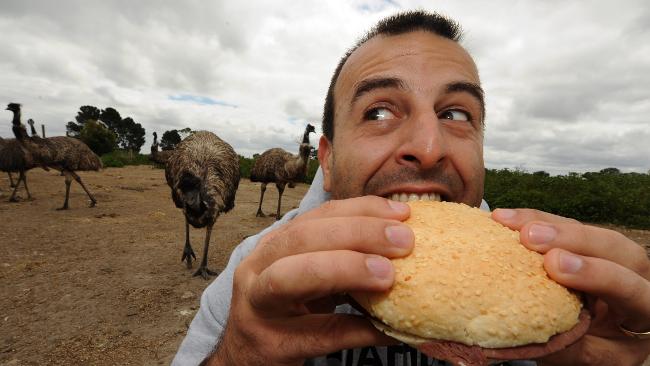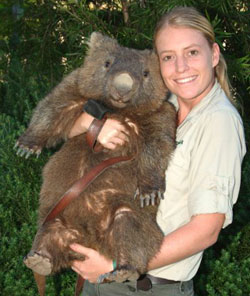Wombats have a lack of fear meaning that they may display acts of aggression if provoked, or if they are simply in a bad mood. Its sheer weight makes a charging wild wombat capable of knocking an average-sized adult over, and their sharp teeth and powerful jaws can inflict severe wounds.
Wombats are marsupials and herbivores; their diet consists mostly of grasses, sedges, herbs, bark and roots.
The name wombat comes from the aborigines that originally inhabited the Sydney area. Wombats were often called badgers by early settlers because of their size and habit. Because of this, localities such as Badger Creek, Victoria and Badger Corner, Tasmania were named after the wombat.
Wombats dig extensive burrow systems with rodent-like front teeth and powerful claws. One distinctive adaptation of wombats is their backwards pouch. The advantage of a backwards-facing pouch is that when digging, the wombat does not gather dirt in its pouch over its young. Although mainly crepuscular and nocturnal, wombats also venture out to feed on cool or overcast days. They are not commonly seen, but leave ample evidence of their passage, treating fences as minor inconveniences to be gone through or under, and leaving distinctive cubic faeces.
Wombat Stew
As the Wombat is a huge keg of prime muscle with a high fat content, there could be a lucrative trade in raising them for the abattoir.
However farming them is difficult as if they are enclosed, they will tunnel their way to freedom. Like fellow escape artists the Kangaroo and the Echidna, any enclosure of a Wombat requires a much greater financial investment than that required of a cow, horse or sheep. Such an investment would unlikely deliver a return as so few Australians would be willing to eat them.
source:Convict Creations

Wombat Casserole
1.5kg Wombat meat
1 can stewed tomatoes
1 can cream of mushroom soup
1 pkg. baby carrots
6 potatoes, quartered
1 small pkg. lentils
1 can tomato juice
Sliced celery
Onions
Green beans
Method:
Place all ingredients in casserole dish and cover with foil. Bake at 180 degrees celsius for 12 hours. Eat hearty.
Wombats are a protected species throughout Australia

















































